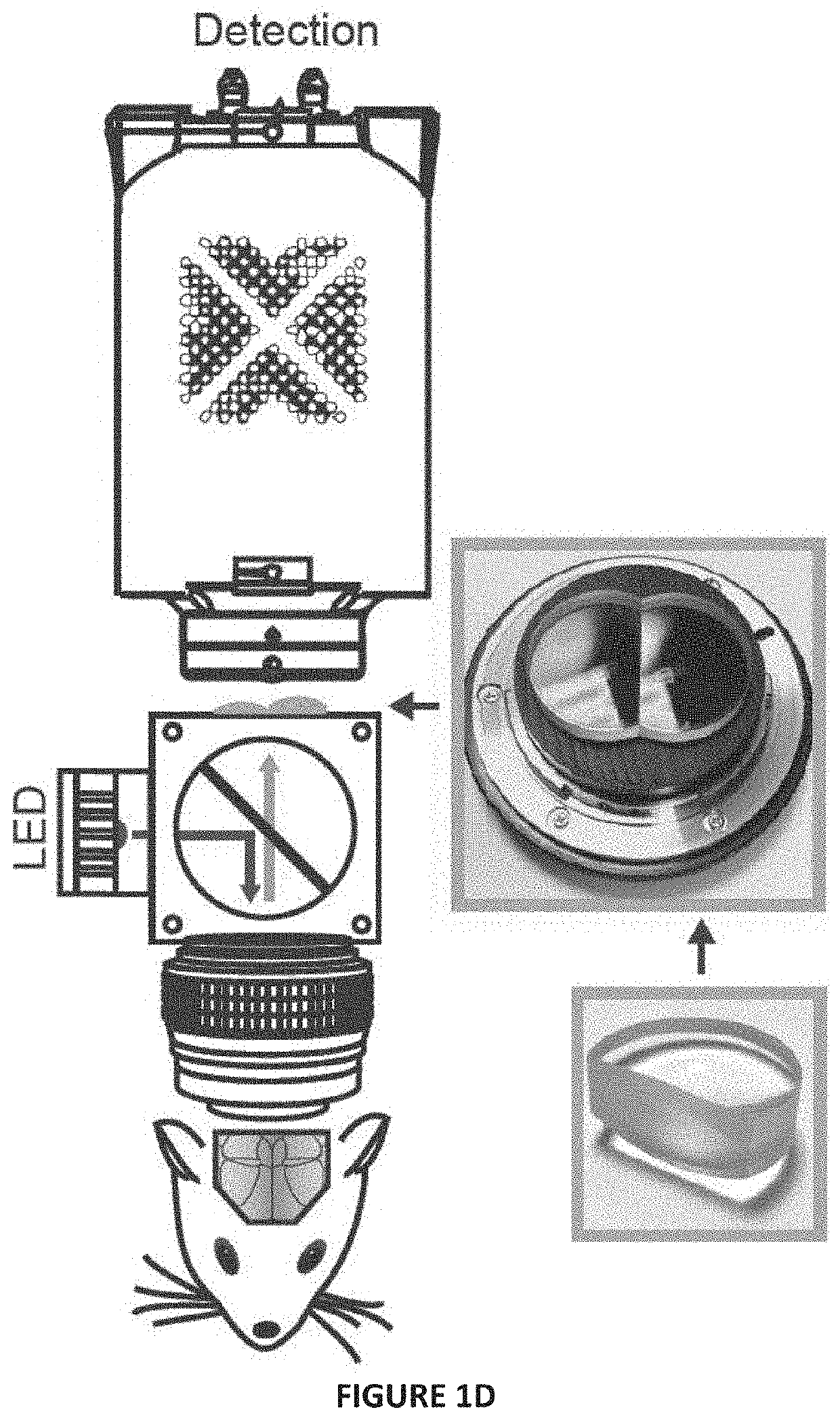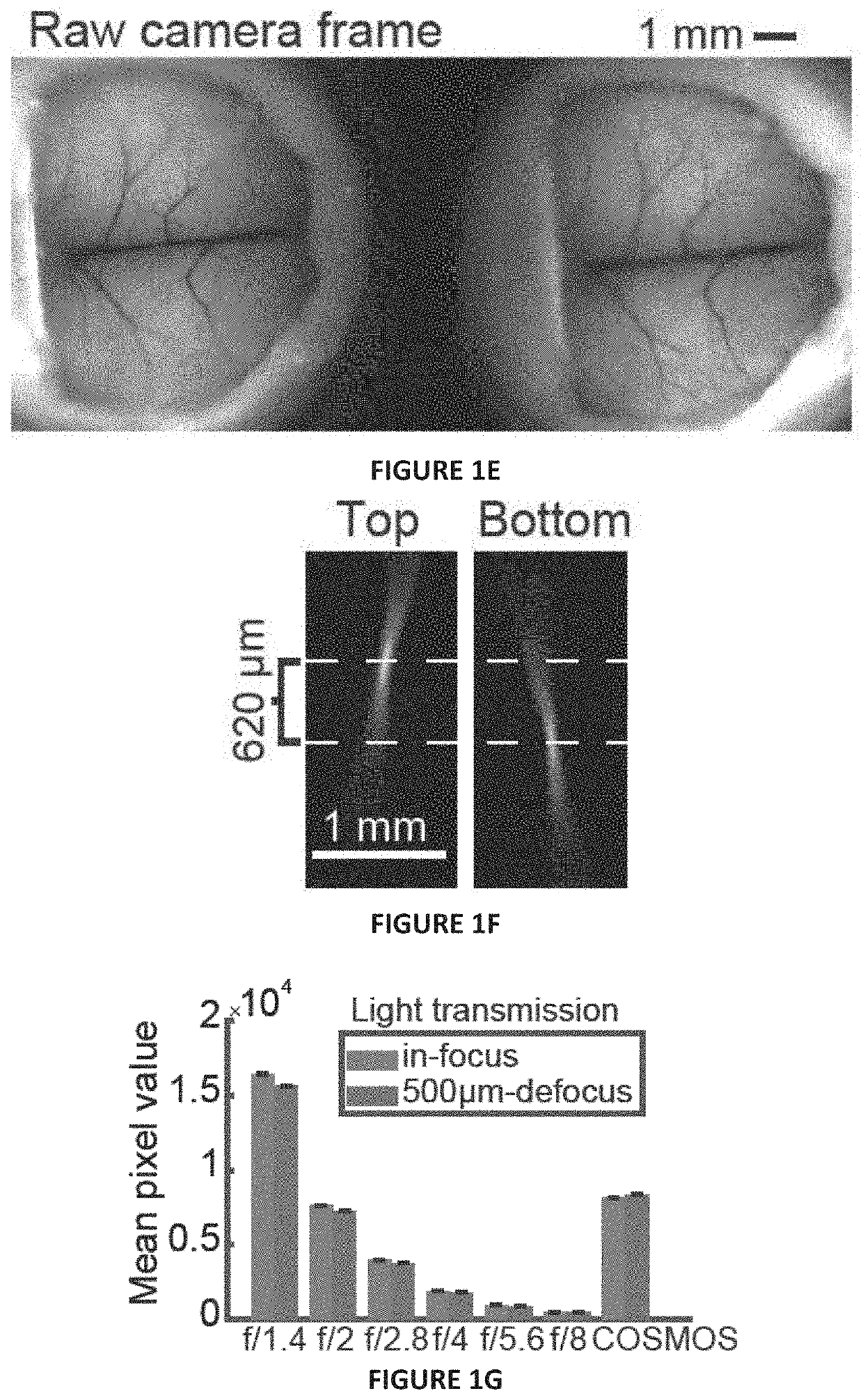Multifocal macroscope for large field of view imaging of dynamic specimens
a macroscope and large field of view technology, applied in the field of multi-focal macroscope for large field of view imaging of dynamic specimens, can solve the problems of persistent limitations, lack of a method for simultaneously measuring fast neuronal activity dynamics at or near cellular resolution across three-dimensional centimeters, etc., and achieve the effect of improving the accuracy of multi-focal macroscopes and reducing the number of images
- Summary
- Abstract
- Description
- Claims
- Application Information
AI Technical Summary
Benefits of technology
Problems solved by technology
Method used
Image
Examples
example 1
Observation by Synchronous Multifocal Optical Sampling Reveals Widespread Population Encoding of Actions
[0108]This Example describes devices and methods that leverage multifocal widefield optics to enable high-speed, synchronous, genetically-specified recording of neural activity across the entirety of mouse dorsal cortex at near-cellular resolution. Imaging fast cortex-wide neural activity in mice trained on a motor task revealed a scale-crossing interplay between localized activity and distributed population encoding on single trials. The device comprises a one-photon multifocal macroscope with a large field of view, high light collection, high sampling rate, and good image quality that is compatible with fluorescent specimens. This example leverages and applies existing technology in new ways to enable advanced performance in application to biological systems, namely: protein expression of an engineered fluorescent neural activity sensor (e.g. GCaMP6 or a voltage indicator) in a ...
example 2
tal Model and Subject Details
[0151]All procedures were in accordance with protocols approved by the Stanford University Institutional Animal Care and Use Committee (IACUC) and guidelines of the National Institutes of Health. The investigators were not blinded to the genotypes of the animals. Both male and female mice were used, aged 6-12 weeks at time of surgery. Mice were group housed in plastic cages with disposable bedding on a standard light cycle until surgery, when they were split into individual cages and moved to a 12 h reversed light cycle. Following recovery after surgery, mice were water restricted to 1 mL / day. All experiments were performed during the dark period. The mouse strains used were Tg(Thy1-GCaMP6s)GP4.3Dkim (Thy1-GCaMP6s, JAX024275), Cux2-CreERT2 (gift of S. Franco, University of Colorado), Ail48(TIT2L-GC6f-ICL-tTA2)-D (Ail48, Jax 030328) (gift of H. Zeng, Allen Institute for Brain Science), B6.Cg-Tg(Slc32a1-COP4*H134R / EYFP)8Gfng / J (VGAT-ChR2-EYFP, Jax 014548),...
PUM
 Login to View More
Login to View More Abstract
Description
Claims
Application Information
 Login to View More
Login to View More - R&D
- Intellectual Property
- Life Sciences
- Materials
- Tech Scout
- Unparalleled Data Quality
- Higher Quality Content
- 60% Fewer Hallucinations
Browse by: Latest US Patents, China's latest patents, Technical Efficacy Thesaurus, Application Domain, Technology Topic, Popular Technical Reports.
© 2025 PatSnap. All rights reserved.Legal|Privacy policy|Modern Slavery Act Transparency Statement|Sitemap|About US| Contact US: help@patsnap.com



